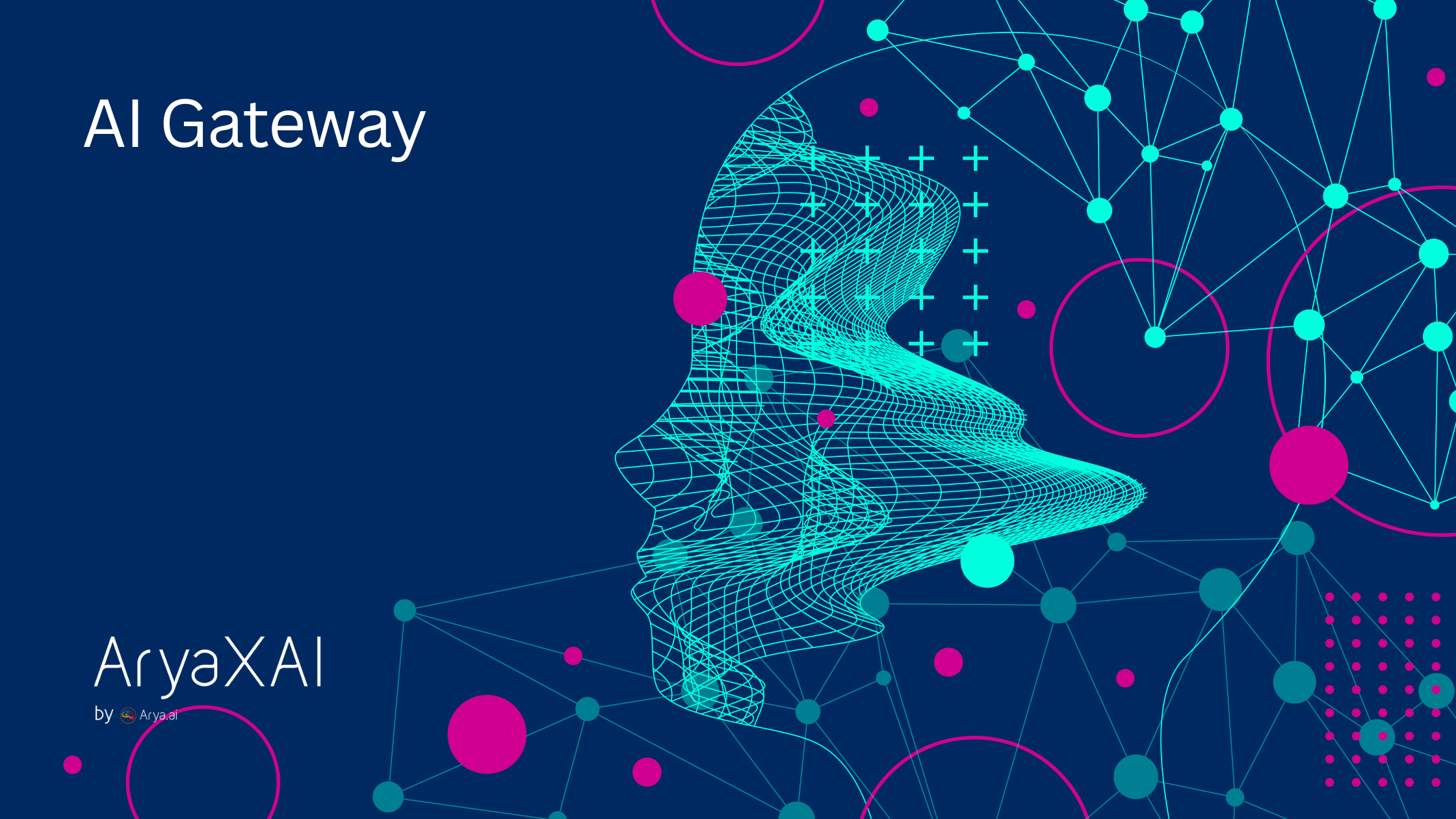Making Privacy Measurable: Safeguarding Sensitive Data in AI Systems
June 26, 2025

As machine learning (ML) models become central to decision-making across industries—from healthcare and finance to marketing and national security—the risks associated with data privacy have never been higher. While performance metrics like accuracy and precision have traditionally taken center stage, there's a growing need to measure how much sensitive data a model may inadvertently reveal. This critical area is at the heart of responsible AI development.
This blog explores the importance of privacy measurement in machine learning, highlighting real-world attack vectors, introducing key metrics like the privacy risk score, and presenting a framework for incorporating privacy safeguards throughout the ML lifecycle. Drawing on insights from Holistic AI and other leading sources, this post aims to go beyond mere compliance and help organizations actively build trustable AI systems.
Privacy in ML: A Strategic Necessity
Machine learning models today are deeply integrated into business processes across industries—from predicting consumer behavior to automating medical diagnoses. These models often rely on datasets rich with personal or sensitive information, including demographics, financial transactions, health records, and behavioral data. Even when datasets are stripped of direct identifiers, the very process of training and inference can inadvertently allow models to memorize or reveal patterns linked to individuals. This latent exposure of private information is a significant and growing concern, contributing to the broader field of AI risks, especially as ML systems scale.
The risk is compounded by increasing regulatory scrutiny. Laws such as the General Data Protection Regulation (GDPR) not only demand responsible data handling but also place a legal burden on organizations to demonstrate that user privacy is adequately safeguarded. Claims of anonymization or secure model design are no longer sufficient in isolation. Stakeholders—ranging from regulators and auditors to customers and investors—are now demanding AI transparency backed by measurable evidence that machine learning systems are not compromising individual data privacy. This is a core tenet of AI governance.
This is where quantitative privacy measurement becomes essential. Rather than relying on theoretical assurances or broad privacy declarations, organizations must adopt methods that empirically assess how much information a model may leak about its training data. Metrics such as the privacy risk score allow teams to evaluate and compare the privacy posture of different models, track exposure over time, and identify specific data points or features that are at heightened risk. Incorporating such privacy measurement transforms data privacy from a reactive compliance function into a proactive, strategic capability for AI risk management.
Membership Inference Attacks: A Real and Growing Threat
One of the most insidious AI privacy risks is the Membership Inference Attack (MIA).
What is a Membership Inference Attack (MIA)?
A Membership Inference Attack attempts to determine whether a specific data point was used in training a machine learning model. Though it may seem innocuous, revealing this information can lead to serious privacy violations in sensitive domains.
Why MIAs Matter: Real-World Implications
- Healthcare: An attacker could infer if an individual participated in a clinical trial or was treated for a particular condition—potentially disclosing protected health information and violating data privacy AI principles.
- Finance: MIAs could reveal if someone applied for or was denied a loan, impacting their financial reputation and posing AI financial risks.
- Marketing: Behavioral data tied to a user could be indirectly exposed, undermining anonymization efforts and violating user trust.
How MIAs Work: Exploiting Model Behavior
ML models often behave differently on training data versus unseen (test) data. Overfitting and lack of proper regularization can cause models to memorize training data, making them particularly vulnerable to privacy leakage. Attackers exploit these behavioral discrepancies—such as variations in prediction confidence or probability scores—to infer membership. Even when AI models are accessed through APIs (i.e., black-box settings), sophisticated MIAs can extract membership information without needing internal model details. This highlights the need for robust AI security.
Why This Threat is Growing
- The proliferation of ML-as-a-service platforms and public-facing APIs increases exposure and AI system vulnerabilities.
- The complexity of models makes it difficult to detect and prevent subtle information leakage, underscoring challenges in explainable AI.
- As regulatory scrutiny around data privacy intensifies, the risks posed by MIAs are no longer theoretical—they are measurable, and increasingly actionable, pushing the need for strong AI compliance.
Privacy Risk Score: Quantifying the Vulnerability
While traditional approaches to protecting privacy in machine learning—such as anonymization or encryption—offer some safeguards, they often lack the precision needed to assess how much risk actually remains once a model is deployed. To bridge this gap, researchers have developed a Privacy Risk Score: a data-driven metric designed to quantify how likely it is that a specific data point can be identified as part of a model’s training set based on the model’s behavior. This score shifts privacy assessment from abstract promises to measurable, actionable insights for AI risk management.
The computation of a privacy risk score involves a structured analysis of how the model responds to different types of data. At a high level, it compares:
- Model behavior on known training samples versus
- Model behavior on held-out (unseen) test samples
To refine this comparison, a common method involves training shadow models—replicas that imitate the target model’s structure and behavior. These shadow models are trained on known datasets, where membership is clearly defined. By observing how these models behave on both member and non-member data points, practitioners can train attack models to predict the likelihood that any given input was part of the original training set. The resulting probability becomes the privacy risk score for each data point.
What makes this approach especially powerful is its sample-level granularity. Rather than evaluating privacy at a coarse, model-wide level, it enables practitioners to identify exactly which records are most vulnerable to inference attacks. For example, a single user’s health record or transaction history may carry a higher privacy risk than others, depending on how the model learned from it. By identifying these high-risk data points, organizations can take corrective actions—such as rebalancing the dataset, applying differential privacy techniques, or retraining the model with improved regularization—to mitigate exposure and strengthen overall privacy resilience.
Thresholding and Risk Trade-offs
The usefulness of privacy risk scores lies not only in their calculation but in how organizations interpret and act upon them. A key part of this process involves thresholding—setting a specific cutoff value on the privacy risk score to determine which data points are considered vulnerable. This decision, however, is not one-size-fits-all. It involves carefully balancing precision, coverage, and contextual risk tolerance, which can vary significantly across domains and use cases. This is a vital part of AI risk management.
For instance, setting a high threshold (e.g., 0.9) means only flagging data points that have a very strong likelihood of being identified as part of the training set. This approach prioritizes high precision, reducing false positives and allowing teams to focus only on the most sensitive cases. However, it may miss other potentially risky data points that fall just below the threshold, thereby narrowing the scope of protection.
In contrast, a moderate threshold (e.g., 0.6) increases recall, capturing a larger portion of data points that may be at some level of privacy risk. While this broadens the coverage and provides a more conservative privacy posture, it may also flag some data points unnecessarily, leading to greater resource demands for mitigation and possibly reducing model utility if aggressive steps are taken across a wider dataset.
The choice of threshold ultimately depends on the sensitivity of the application domain. In regulated environments like healthcare or finance, even a handful of high-risk exposures could carry serious ethical, legal, or reputational consequences. In such contexts, organizations may opt for a lower tolerance for AI risk and use stricter thresholds. On the other hand, in consumer-facing sectors like e-commerce, where the data is less sensitive and risks are more reputational than regulatory, a more flexible thresholding strategy may be acceptable. Tailoring the threshold to context ensures that privacy protections are both effective and proportionate to the level of harm they are designed to prevent. This aligns with broader AI governance principles.
Model Architecture and Its Role in Privacy
The architecture of a machine learning model significantly influences its tendency to leak private information. While complex models may offer higher accuracy, they also introduce greater AI risks, especially when it comes to attacks like Membership Inference Attacks. Understanding this trade-off is essential for designing privacy-aware AI systems.
- Simpler models (like logistic regression) tend to have lower privacy risk scores. Their limited capacity helps avoid memorizing specific training examples, making them inherently more privacy-preserving.
- Complex models (such as random forests and deep neural networks) can achieve better predictive performance but are also more vulnerable to privacy leakage. Their expressive power allows them to encode detailed patterns—including sensitive ones—making them easier targets for attackers.
This highlights the need to treat privacy as a primary design criterion. In high-risk domains, choosing simpler models or pairing complex ones with privacy-enhancing techniques (like regularization or differential privacy) becomes a strategic decision for responsible AI.
Strengthening Privacy Protections
While privacy measurement is essential, it’s just the beginning. Organizations should employ a multi-layered strategy to reduce the privacy risks in ML models:
- Differential Privacy: Mechanisms like DP-SGD or noise addition can ensure that no single record unduly influences the model. Though this may reduce accuracy, it offers strong formal privacy guarantees.
- Regularization Techniques: Methods like dropout, weight decay, and sharpness-aware minimization help mitigate overfitting—one of the main causes of privacy leakage.
- Adversarial Training: By training the model to resist simulated inference attacks, developers can make it more robust against real-world AI threats.
- Ongoing Auditing: Privacy leakage isn’t static. As AI models are updated or retrained, periodic testing with shadow models helps detect regressions in privacy performance. This supports ongoing AI auditing.
A Framework for Operationalizing Privacy Measurement
Embedding privacy measurement into the machine learning (ML) development lifecycle requires more than isolated technical fixes—it calls for a systematic, end-to-end framework. Organizations must move from reactive privacy safeguards to a proactive, measurable approach that integrates privacy by design at every stage of the AI model pipeline. Below is a structured framework to operationalize privacy measurement across the ML lifecycle:
1. Data Collection
- Minimize sensitive data intake: Collect only the data strictly necessary for the model’s purpose. Apply data minimization principles to reduce exposure and adhere to data privacy AI.
- Use de-identification and anonymization: Strip out personally identifiable information (PII) and apply masking, hashing, or tokenization techniques to reduce re-identification risk.
2. Model Training
- Evaluate shadow models: Use simulated shadow models that mimic the real model’s behavior to benchmark privacy risk and detect potential vulnerabilities.
- Select privacy-conscious architectures: Prefer models with lower inherent memorization tendencies, especially in sensitive applications. Factor privacy alongside performance metrics when choosing architectures.
3. Risk Scoring
- Generate sample-level privacy risk scores: Use metrics like the privacy risk score to estimate how likely individual data points are to be inferred from the model.
- Define thresholds based on risk tolerance: Set privacy risk thresholds according to the domain—e.g., stricter in healthcare, more flexible in marketing—balancing precision and recall in identifying vulnerabilities.
4. Hardening
- Apply differential privacy and regularization: Introduce noise to model outputs or loss functions, and use dropout, weight decay, or early stopping to reduce overfitting and memorization, further strengthening AI security.
- Fine-tune based on observed risks: Use insights from risk scoring to iteratively harden the model against specific privacy vulnerabilities.
5. Deployment
- Set risk-based monitoring triggers: Define automated alerts if privacy scores rise above acceptable thresholds after deployment.
- Track privacy metrics over time: Continuously monitor how new data, retraining, or feature drift affects privacy posture in production environments.
6. Re-evaluation
- Conduct regular audits: Perform ongoing evaluations to ensure the model’s privacy remains intact, especially in light of regulatory changes or newly discovered attack vectors.
- Adapt to evolving threats: Update privacy measurement tools and strategies in response to changes in model behavior, data distribution, or adversarial tactics.
The Future: Integrating Fairness and Privacy
As machine learning systems become more integral to decision-making in critical domains—like healthcare, finance, and criminal justice—the need to ensure both privacy and fairness has become increasingly urgent. These two pillars of responsible AI, while often treated separately, are deeply interconnected. Privacy-preserving techniques, particularly differential privacy, can sometimes degrade fairness by disproportionately affecting certain demographic groups. Conversely, efforts to correct fairness imbalances may inadvertently increase the privacy risks for those same groups.
To address this, the field is moving toward multi-objective optimization frameworks, where privacy and fairness are no longer viewed as trade-offs but as co-optimized objectives within the model development lifecycle. This involves the ability to measure both properties quantitatively and tune models in a way that strikes a practical, context-sensitive balance.
Ongoing research is focused on building frameworks that can simultaneously:
- Ensure equal treatment across protected groups by minimizing disparate impacts in model outputs.
- Reduce privacy leakage, particularly for vulnerable or historically marginalized populations.
- Maintain high predictive performance, ensuring that privacy and fairness safeguards do not come at the cost of utility.
This integrated approach represents a shift from siloed ethical concerns to a systems-level view of trustworthiness in AI. As tools and metrics for fairness and privacy evolve, organizations will need to adopt development practices that treat them as co-equal, measurable design goals—central to building accountable, transparent, and human-centered AI systems.
Conclusion
Privacy measurement in machine learning is no longer optional—it is a cornerstone of responsible AI development. By moving from abstract promises to concrete metrics like the privacy risk score, organizations gain clarity about how their AI models behave and where they fall short.
Investing in privacy measurement allows developers to make informed decisions, build defensible models, and foster trust with users, regulators, and stakeholders alike. As the landscape of data governance continues to evolve, those who embrace a rigorous approach to privacy will lead the way in safe, ethical AI innovation.
SHARE THIS
Discover More Articles
Explore a curated collection of in-depth articles covering the latest advancements, insights, and trends in AI, MLOps, governance, and more. Stay informed with expert analyses, thought leadership, and actionable knowledge to drive innovation in your field.

Is Explainability critical for your AI solutions?
Schedule a demo with our team to understand how AryaXAI can make your mission-critical 'AI' acceptable and aligned with all your stakeholders.



.png)




















